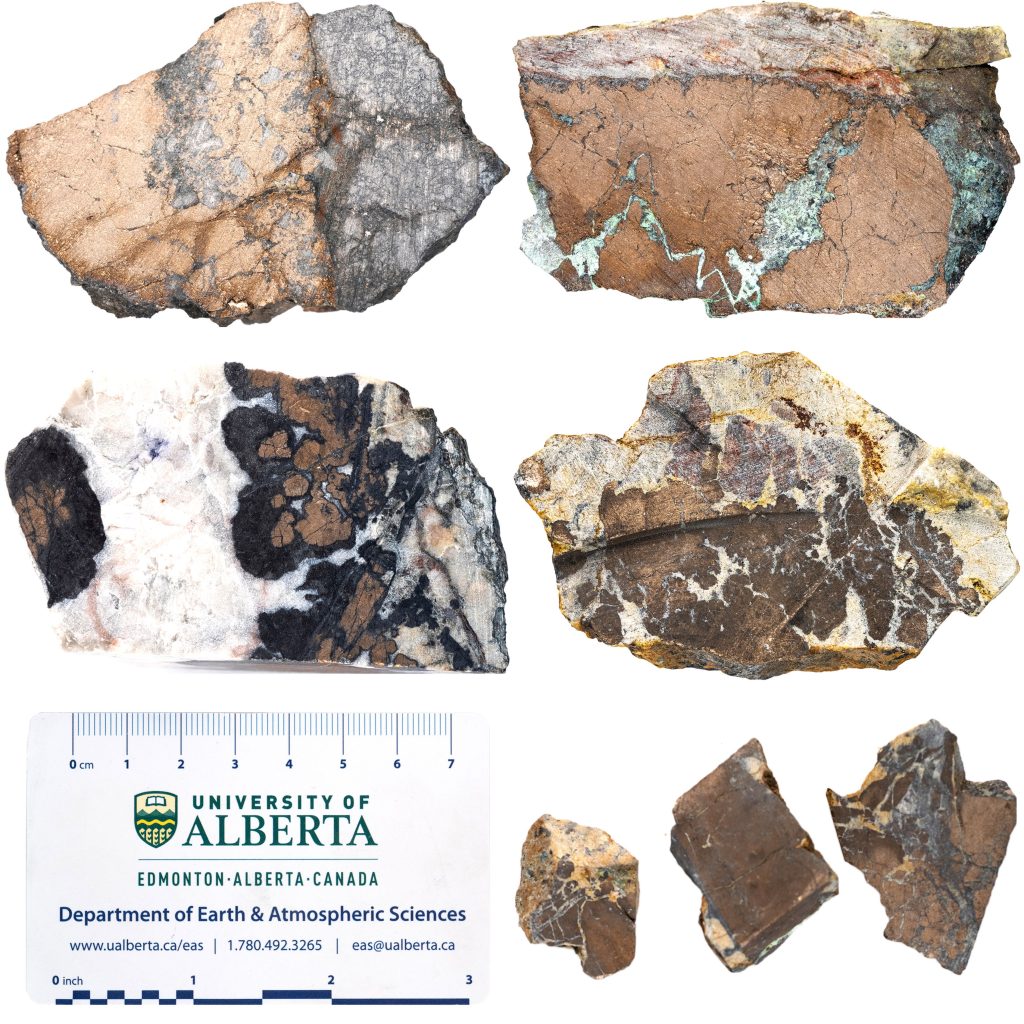Submission 2023
| Submitted by: | Eric Dorais |
| Department: | Earth and Atmospheric Science |
| Faculty: | Science |
Rhenium-187 is a radioactive isotope of the element Rhenium that transforms into Osmium-187 through a process called beta decay. Scientists have discovered that this decay takes tens of billions of years to occur, allowing us to use it to determine the age of rocks, if we can determine the ratio of Rhenium-187 and Osmium-187 within them. Although it is very labour intensive, this technique has helped us understand both the history of our Earth and especially of the formation of precious metals like Gold and Copper.
These photos show Nickeline samples from Eldorado Mine and the Caribou Lake Gabbro, which are both rich in valuable Nickel-and Cobalt-bearing ores. Before analyzing the rocks’ chemical composition, we took these photos as a record, as the process requires grinding the rocks into a very fine powder. We plan to use Rhenium-Osmium systematics to determine the ages of these rocks and gain insight into the formation of these Cobalt and Nickel ores. Hopefully, this information will improve our understanding of how these valuable resources are formed.

